When to grow cucumbers in central Texas?
Cucumbers are warm-season crops. Grow them in central Texas after all danger of frost has passed, which is around the second half of April.
Note that high temperatures affect fruit settings drastically. For this reason, Texas gardeners plant cucumbers in two intervals. The first one starts in early Spring for the early summer harvest. Then the second planting happens in July for a fall harvest.
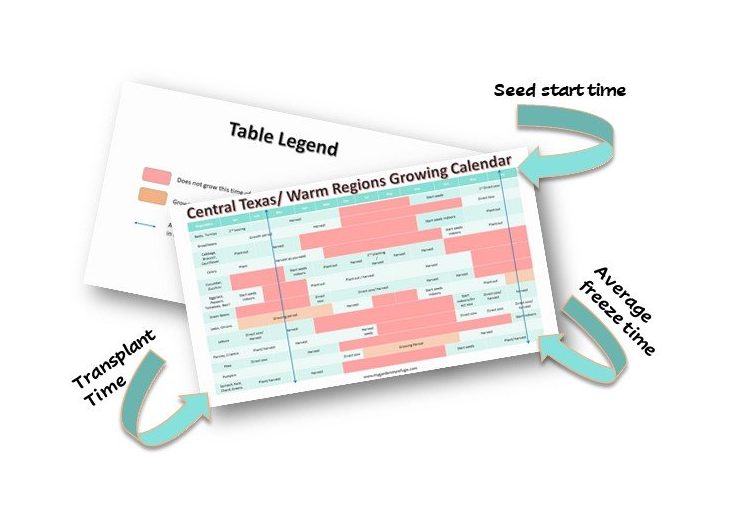
Do we grow cucumbers in pots, raised beds, or inground?
Cucumbers are easy to grow in pots, raised beds, or inground. Therefore, no matter the gardening method, there should be no critical issues.
Yet, container gardening is a bit challenging in hot regions. It requires frequent watering as the soil dries out fast.
Another problem with pot gardening is the lack of nutrients. As the plant grows, it depletes the potting soil from the existing nutrients quickly. So, a consistent fertilizer application is necessary to keep the plant going.
Raised beds and ground planting are less demanding and quite forgiving. The plant has the freedom to send its roots deeper into the ground, looking for water and nutrients.
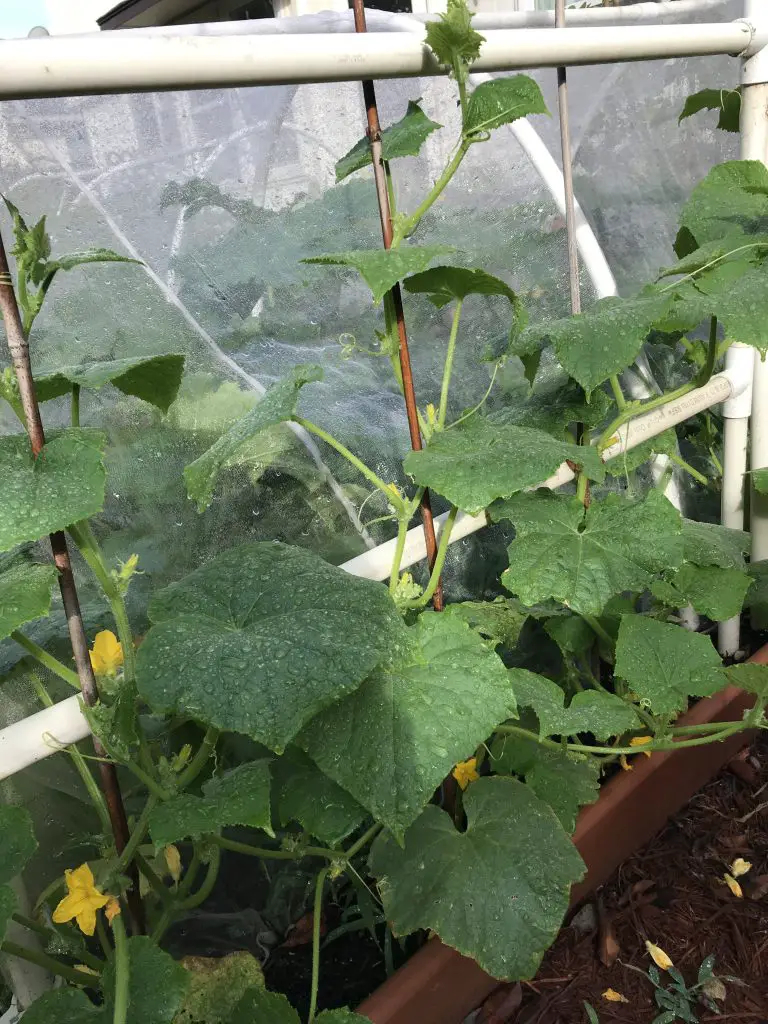
Do I start cucumber seeds or direct sow?
The common practice is to direct sow the seeds in the soil. Unfortunately, cucumbers are delicate plants and do not appreciate the excessive handling of their roots. But, since spring is too short in central Texas, starting the seeds indoors can buy you some growing time before the harsh heat.
To reduce transplant shock, start seeds in four to six-inch containers to give the roots plenty of room to expand.
How to start cucumber seeds?
- Using a suitable container: Cucumber roots are sensitive. Therefore, instead of using seed starting cells, four or six-inch containers will be more appropriate.
- A good seed starting soil: Using the right soil mix to start seeds is essential for good germination and growth. It has to be airy, well-draining, and retains enough moisture.
- Light: Every seed needs light to germinate. The perfect light is sunlight; use a greenhouse or a windowsill with good exposure. If not, use an imitation light source like daylight fluorescent shop light. There are lights designed specifically for seed starting if you choose to invest in one.
- The proper depth: Plant the seed at the correct depth. The rule of thumb is to plant it twice its size deeper.
- Water: The seed needs to absorb water to germinate. However, give it just the right amount, no less, no more. Soil should always be moist and not wet.
- Keep the seedlings healthy: Begin a regular fertilization regimen with a low concentration once the first true leaves appear. Water regularly without drowning the baby plants.
If you wish to know more about seed starting basics, click here.
What type of soil to grow cucumbers?
Cucumbers thrive in well-draining soil that is rich in organic matter. Amend the soil with compost or leaf mold to improve its texture and organic content.
How much sunlight do cucumbers need to grow?
Cucumbers need at least six hours of light to produce well. In Texas, afternoon shade can reduce heat stress on the plants.
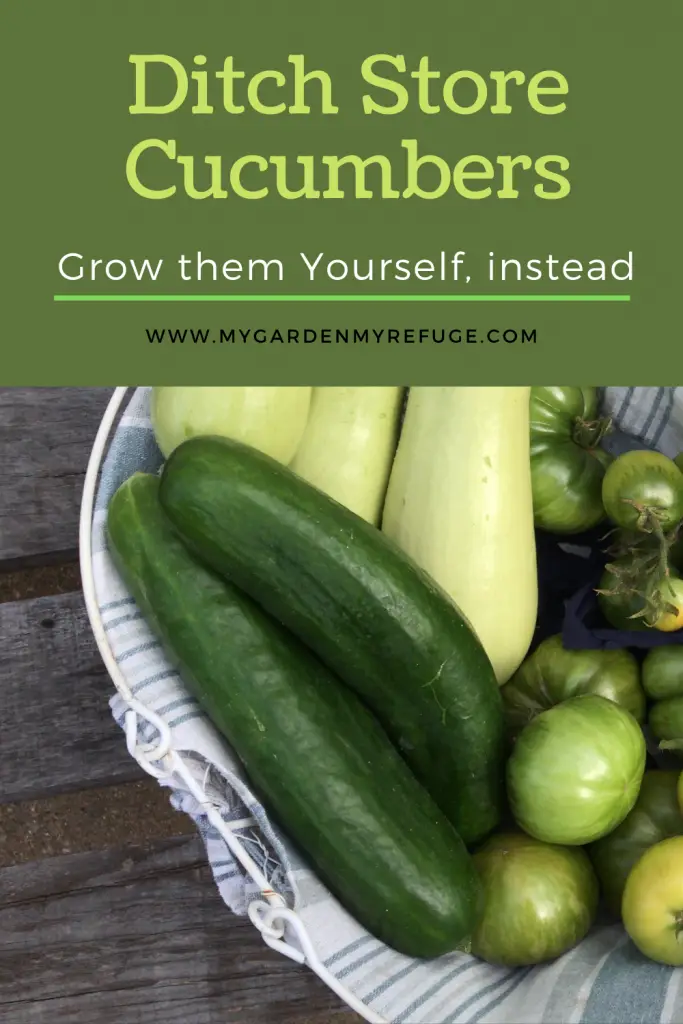
How to water cucumber plants?
During the hot summer days, cucumber plants need regular watering. Leaving the soil dry for too long may trigger stress, hindering growth and production.
A moisture test could help determine the watering frequency. The test is as simple as inserting a finger an inch deep in the soil. If it comes out dry, then it is time to water. If it comes out moist, then there is no need to water.
A good practice is to water the soil and not the foliage. On the one hand, it minimizes water waste. On the other, it reduces the chances of leaf burn and fungal diseases.
How many plants to plant per person?
In general, one vining cucumber plant or two bush types feeds one person for a season. Yet, it all depends on how much one loves the vegetable. The number may double for those who eat cucumbers all day long.
How far to space cucumber plants?
There are two types of cucumber plants: vining and bush. The bush type is compact and needs some ground space. The vining type needs a trellis; otherwise, it takes over the room.
Spacing cucumbers at one foot apart is the least recommended for home gardeners. However, if there is room, 18″ or 24″ is ideal for easier maintenance and management.
Do cucumber plants need a trellis?
As mentioned above, some cucumbers have a vine-like growth habit. If there is nothing to climb, they crawl on the ground and hang onto anything.
There are many trellising ideas out there. They range from expensive arches to cheap pallet support. Cattle panels are among the most common trellises used for vining crops.
Here is a post on making a simple trellis using PVC and wire mesh.
Fertilization
The plants need three primary nutrients: Nitrogen, Phosphorus, and Potassium. Each nutrient has a specific role in the plant’s growth.
Cucumbers need regular feeding to thrive through the growing season. Therefore, you may only use fish-based fertilizer as an organic gardener, such as fish emulsion. Providing an occasional side dressing with dry slow-release is also an option.
There are three main macronutrients that plants need: N, P, and K.
N stands for Nitrogen which encourages green growth. P stands for Phosphorus which promotes flowering and fruiting. Last is K standing for Potassium, and it impacts the plant’s lively functions.
During the growth stage, use a fertilizer with a higher Nitrogen number. Then, as the season goes on, go for a fertilizer with a higher Phosphorus.
Harvest
When planting a vegetable, always check the seed packet or label for days till maturity. While the number does not provide the exact time to harvest, it gives an idea of how long it takes. Also, check the final size of the fruit and its expected color.
Depending on the variety, the cucumber is ready for harvest when it reaches the expected size. In general, the fruit should be bright, shiny, and wrinkle-free.
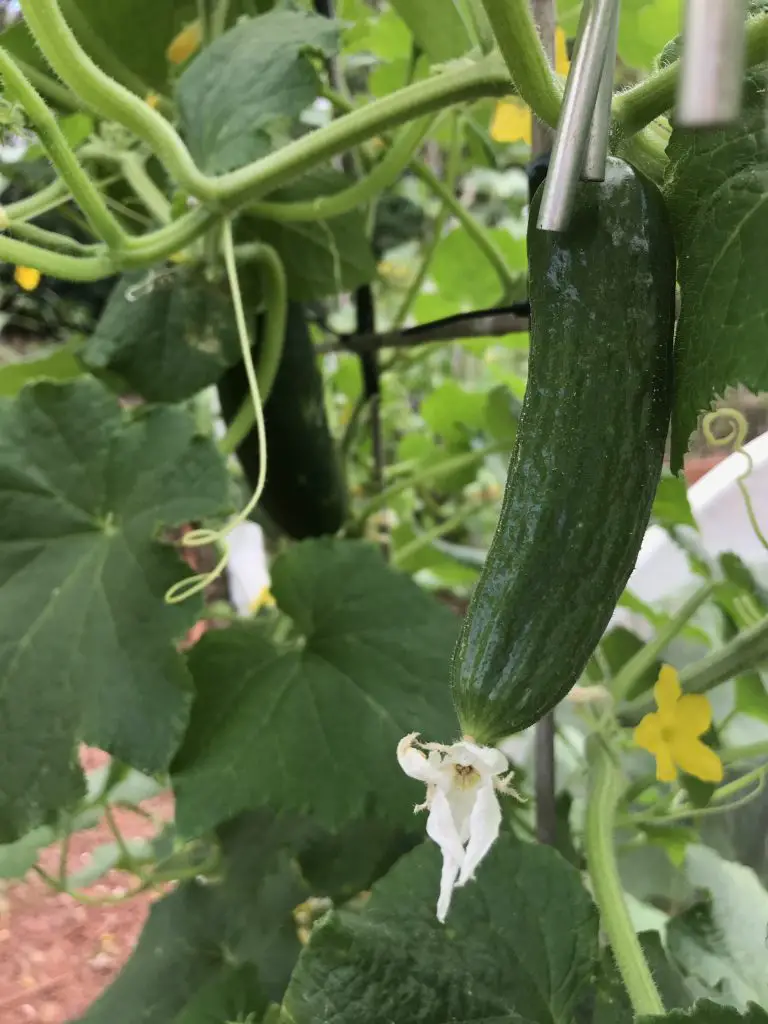
Problems when growing cucumbers
The following are the most common problems while growing cucumbers.
Pest
There are a few annoying pests that attack the cucumber plants.
- Spider mites are tiny insects that live by sucking on the leaf sap. Without prompt management, they can turn into an infestation fast. The best way to keep them under control is to spray them off with a seaweed solution. Apply every other day to disrupt their reproductive cycle.
- Leaf-footed bugs are another sucking insect. They have an armor-like elongated shape at their adult stage, with leaf-like shape back legs. At the juvenile stage, they look more like red spiders. They survive by sucking the juice of the fruits, leaving a scar on the skin. The best way to avoid an infestation is by catching and trapping them in a jar filled with soapy water.
- Stink bugs are very similar to leaf-footed bugs. The main difference is that they have shorter bodies and legs.
- Aphids are light green or black insects found on the new growth. They are the worst nuisance in the garden. Regular washing using a strong jet of water will disturb their reproductive cycle.
- Vine Borer is the larvae of the wasp-like moth known as the Squash Vine Borer. Usually, it attacks the summer squash, but sometimes it gets to the cucumbers.
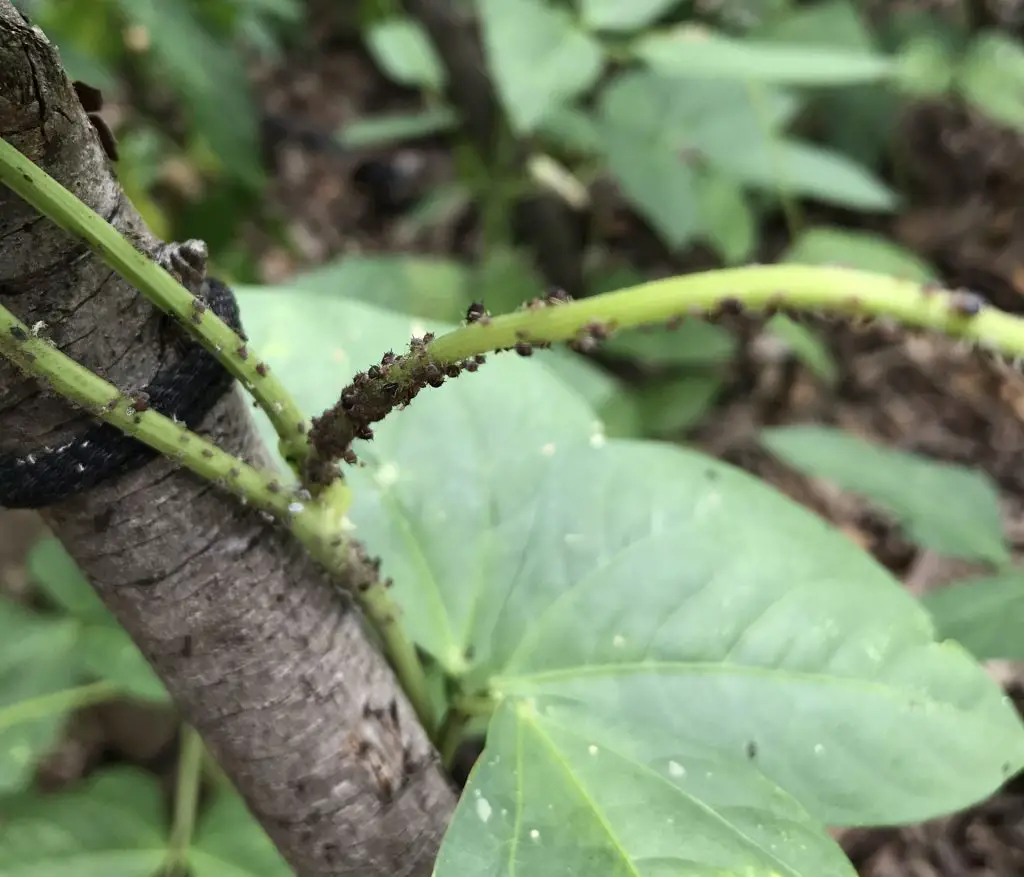

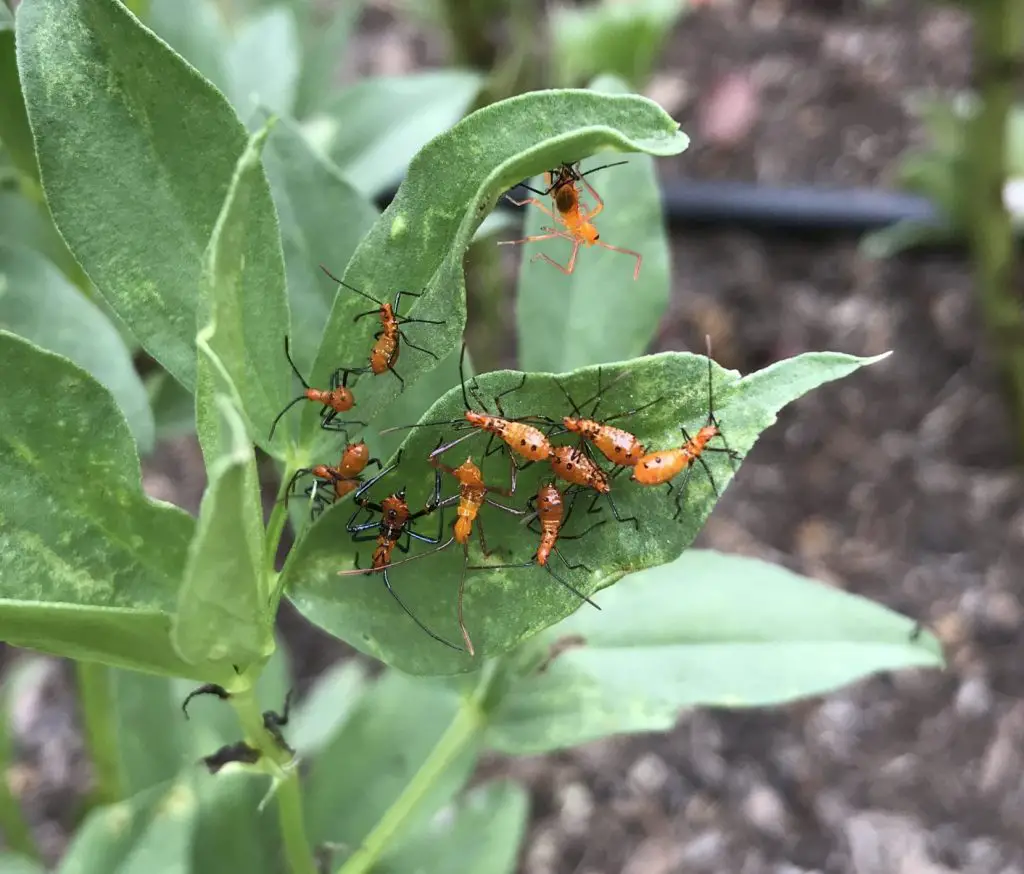
Mildew
Powdery mildew is the most common cucurbit disease in central Texas. It is a fungal disease that looks like a whitish powder on the leaves. Spraying the foliage with a solution of 1 tablespoon of baking soda in one gallon of water can help control it.
Another kind of mildew is Sooty mildew. It is a kind of mold that thrives on the honeydew secreted by aphids. Controlling the aphids is the first step to keeping sooty mildew at bay.
Why my cucumber plant has no fruit?
When a plant looks healthy but does not set fruit, that is due to a lack of pollination. But, there may be other reasons for that to happen.
- Not enough sunlight: All fruiting plants need six hours of direct sunlight. Some shade doesn’t hurt in the afternoon but not too much.
- Stress: Many factors can strain the plant. Root disturbance at planting time, irregular watering, or pest damage can cause stress.
- Lack of pollination: You may want to take over nature’s job. Also, plant more flowers around the garden to increase the pollinator population.
- High temperatures: Temperature has a significant impact on fruit production. During the hot summer, most fruiting plants stop setting fruit. Using shade cloth to provide shade may be a good solution.
- Using the wrong fertilizer: Make sure to use a fertilizer with a higher middle number, phosphorus. Otherwise, the plant will put on a lot of green growth but no flowers.
One practical practice that encourages fruiting is to cut the lateral growth. These new branches will make new plants, taking all the energy away from the main stem.
Pruning the vines also helps reduce disease spread and pest infestation.
Why do my cucumbers taste bitter?
The bitterness of the cucumbers is due to stress or lack of water. The solution is to water regularly or plant a non-bitter cultivar.
Even past their prime time, “Japanese” and “Tendergreen burpless” do not develop bitterness.
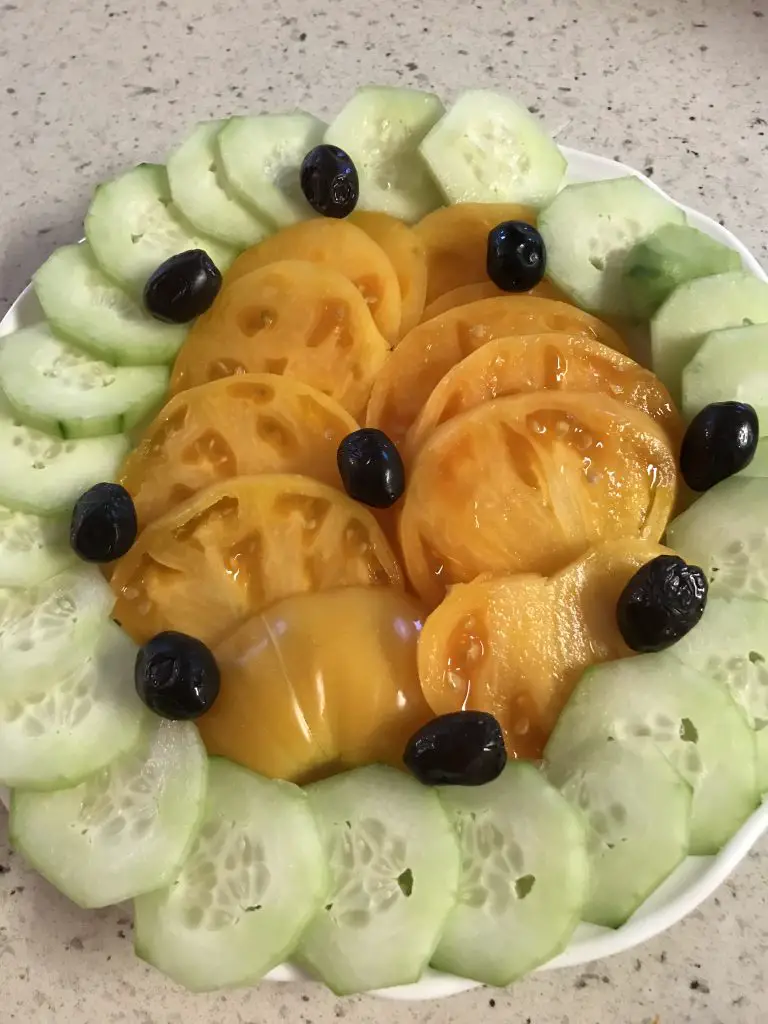
Why my cucumber plants are wilting?
If the plant is well-maintained, wilting might not be a problem. One of the plant’s ways to survive the heat is to reduce evaporation by reducing the surface exposed to the sun.
If the wilting persists, that might be a sign of a problem. It could be vine borer damage or overwhelming disease. Inspect the plant thoroughly and investigate the cause of the wilt.
Cucumbers in the kitchen
Cucumbers are refreshing summer vegetables. They are in every cuisine around the world. Other than eating them raw or adding them to sandwiches, some of our favorite cucumber recipes are:
- Cucumber pickles
- Cucumber kimchi
- Asian cucumber salad
- Middle Eastern garden salad
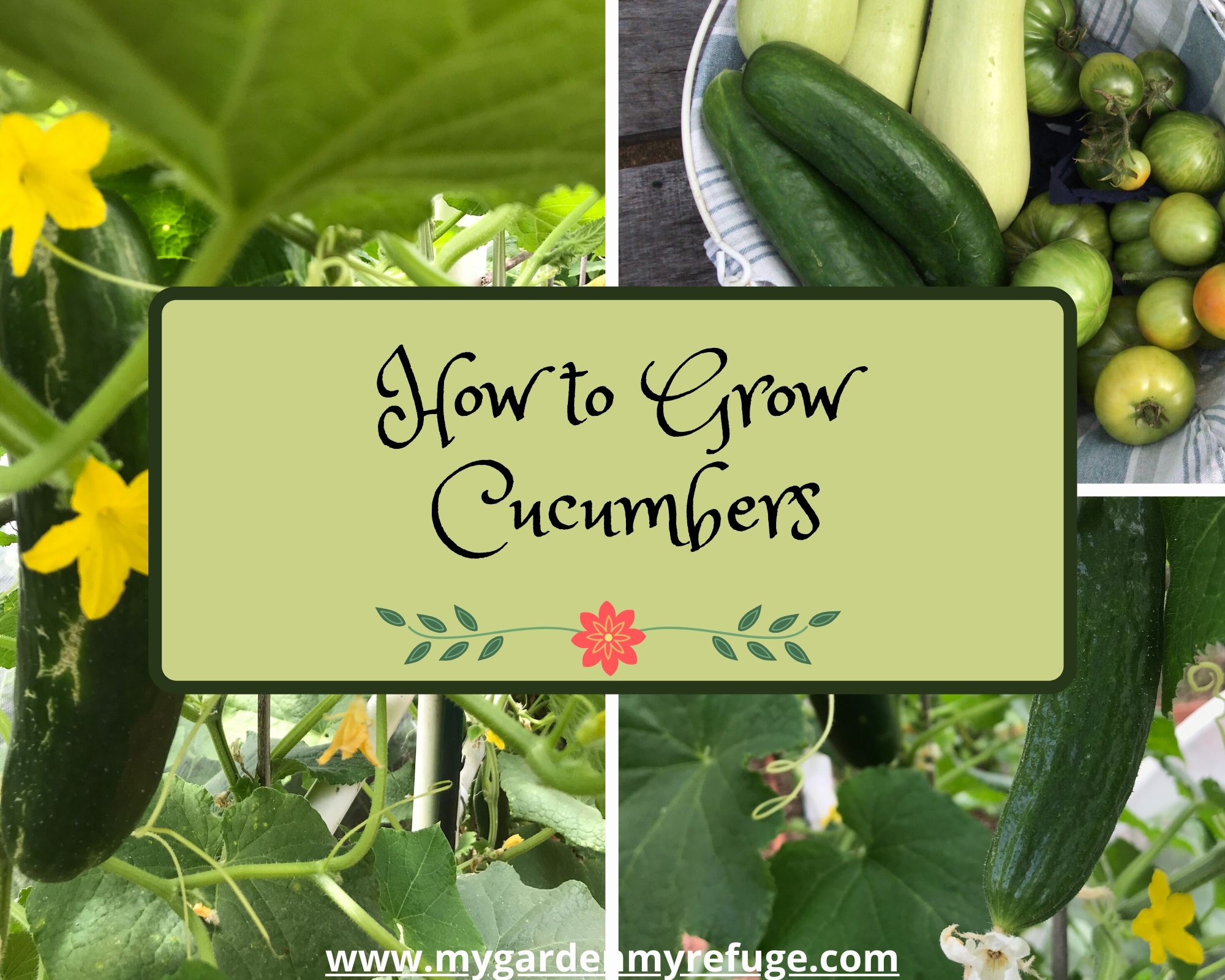
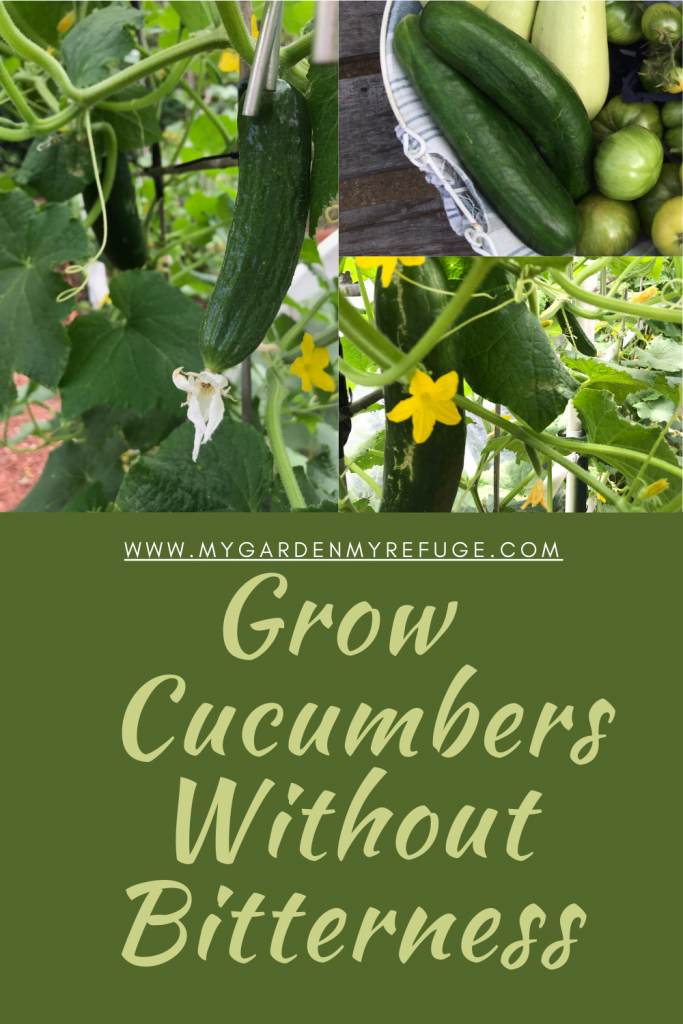
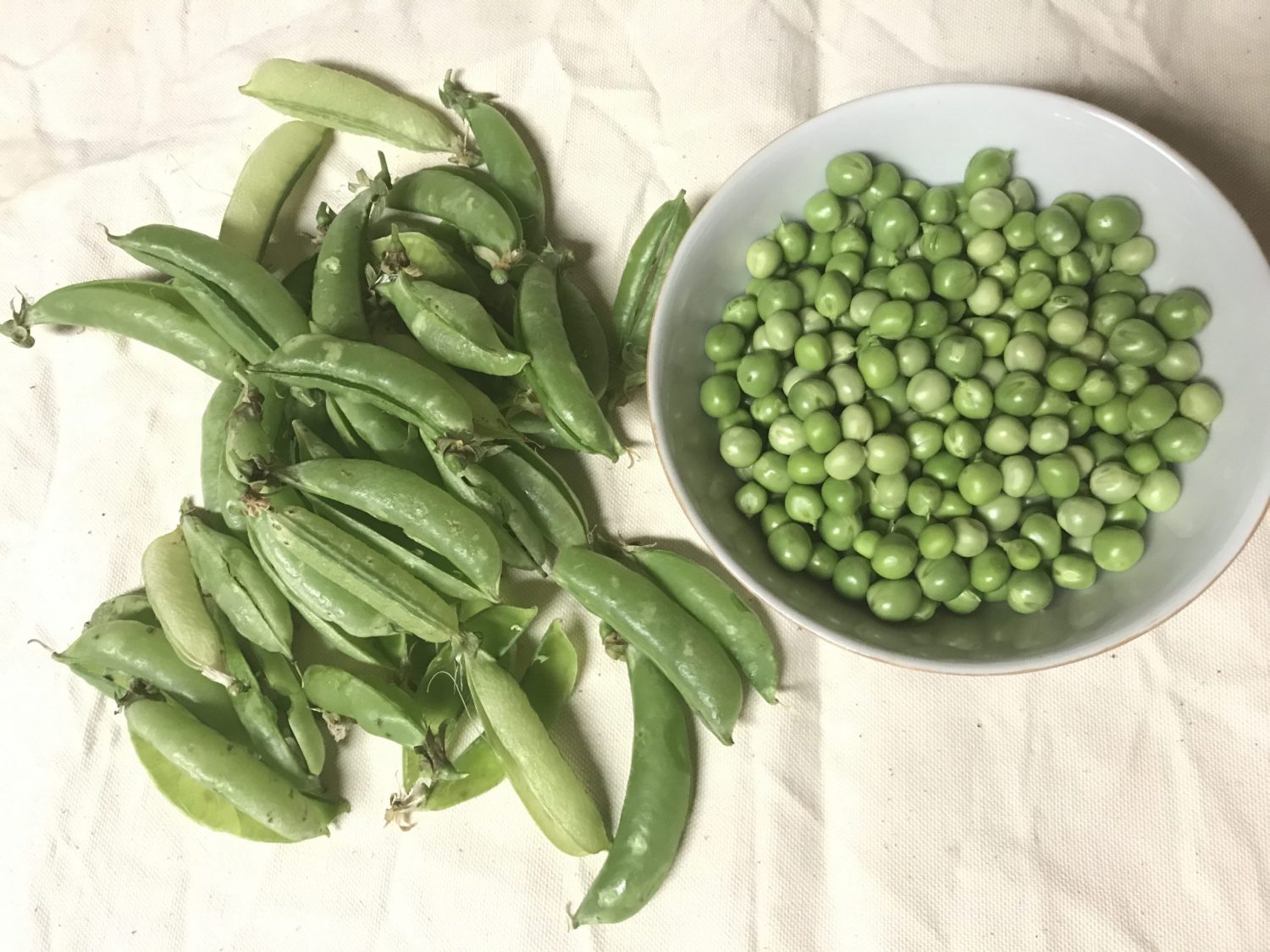
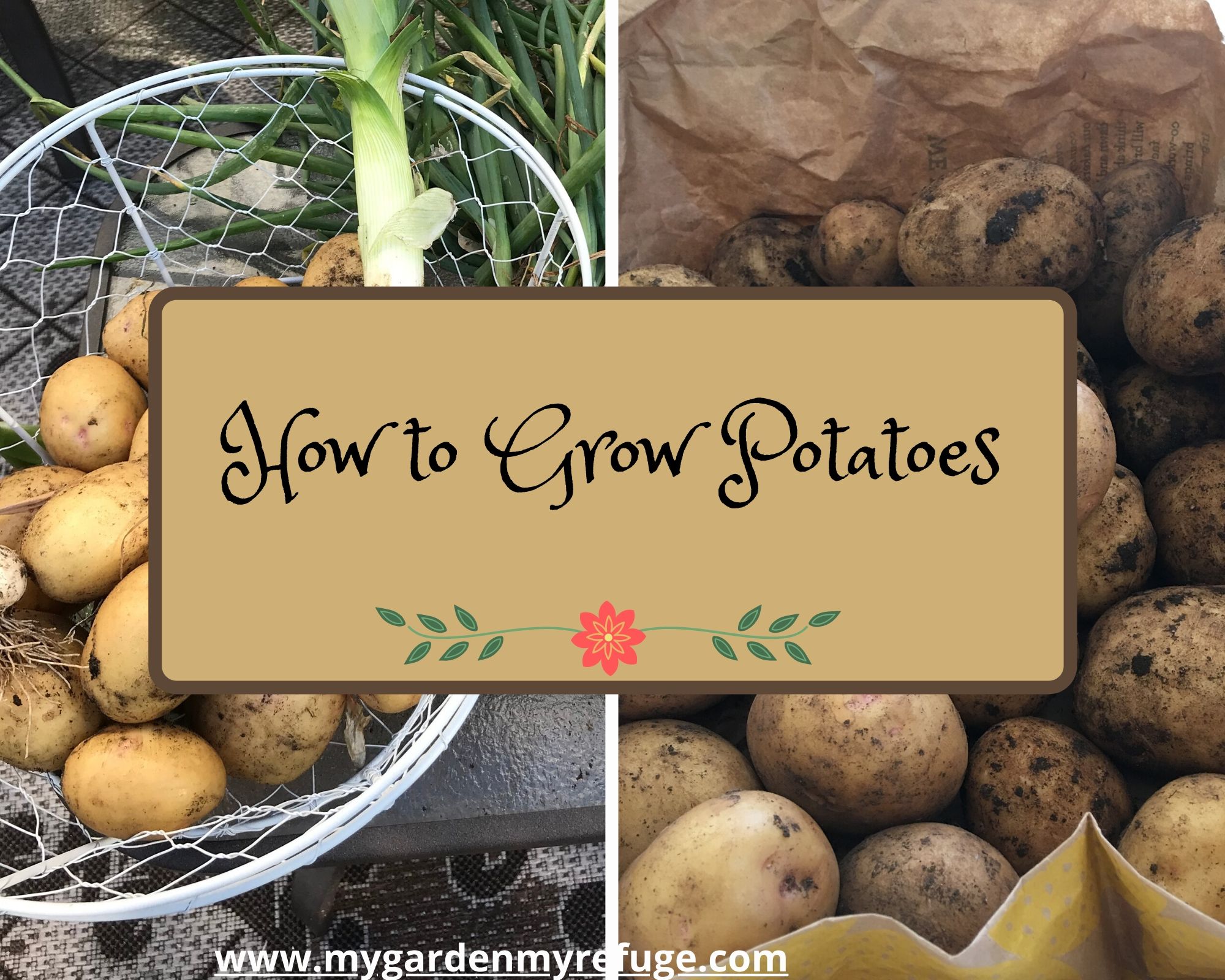
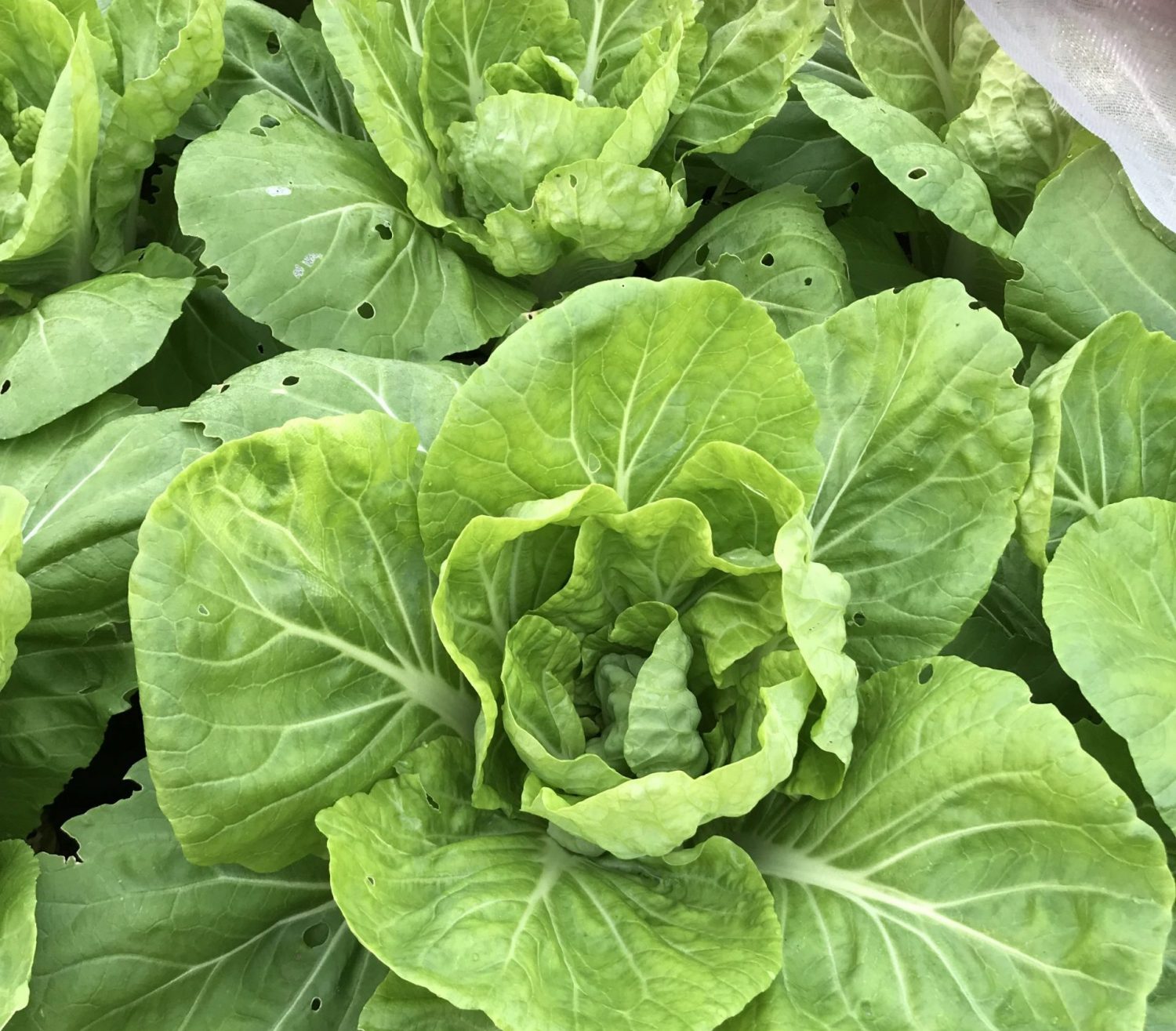

Hi there! Someone in my Facebook group shared this website with us so I came to check it out. I’m definitely loving the information. I’m bookmarking and will be tweeting this to my followers! Outstanding blog and fantastic design.
Aww! Thank you Myrna, I appreciate your encouraging comments and the support. Thank you for sharing.
I have only had success with the Armenian cucumber here – I am in Georgetown.
Haven’t tried that one yet, I heard about it. The evergreen burpless cucumber is my go-to since last year. I might give the Armenian one a try next year.
I am fairly new to growing cucumbers, this will be my second attempt. I live in south Texas do you have any suggestions or tips? Also can I use the soil from last year or should I remove the soil and buy more
Hello Kelsey, thank you for coming by.
The most important thing is to find a reliable variety. One that does not get bitter with the least stress (drought). For me, I have been growing Tendergreen Burpless variety from Baker Creek. Second, have a regular watering schedule. Infrequent deep watering is better than daily shallow watering. Third, use a trellis to support the vine. It will keep your cucumbers clean and the garden tidy. By July, your vine might look ugly so start a new round of planting for fall harvest.
If you are growing in raised beds or in-ground, no need to buy new soil, just add compost and fertilize with fish emulsion every two to three weeks.
Hope this answers your question.
Wishing you a successful gardening season.
The orange black nymphs you show in the photo are assassin bug nymphs, not stink bug nymphs.
Assassin bugs are good for the garden. I can see how it can be confusing: orange/black coloration of stink bug nymphs is similar to assassin bug nymphs, but their respective shapes and patterns differ from one another markedly! Stink bug nymphs: roundish, pudgy bodies with black horizontal stripes; assassin bug nymphs: elongated, curved bodies (abdomens) with black spots and long delicate black legs.
Thanks for these valuable cuke tips! Maybe this year I’ll be successful.
Thank you for pointing that out Julia. Actually they are leaf-footed bug nymphs, not assassin bugs. The confusion in fact is on differentiating the stink bugs from the leaf-footed bug. At their adult stage they are very similar and cause the same damage in the garden.
Thank you again.